This week’s episode of The Air Show with Brett Snyder (Cranky Flier), Jon Ostrower (The Air Current) and Brian Sumers (The Airline Observer) focuses on what’s wrong with American Airlines. And they do it without talking much about the American Airlines product and brand, promising that for a future episode.
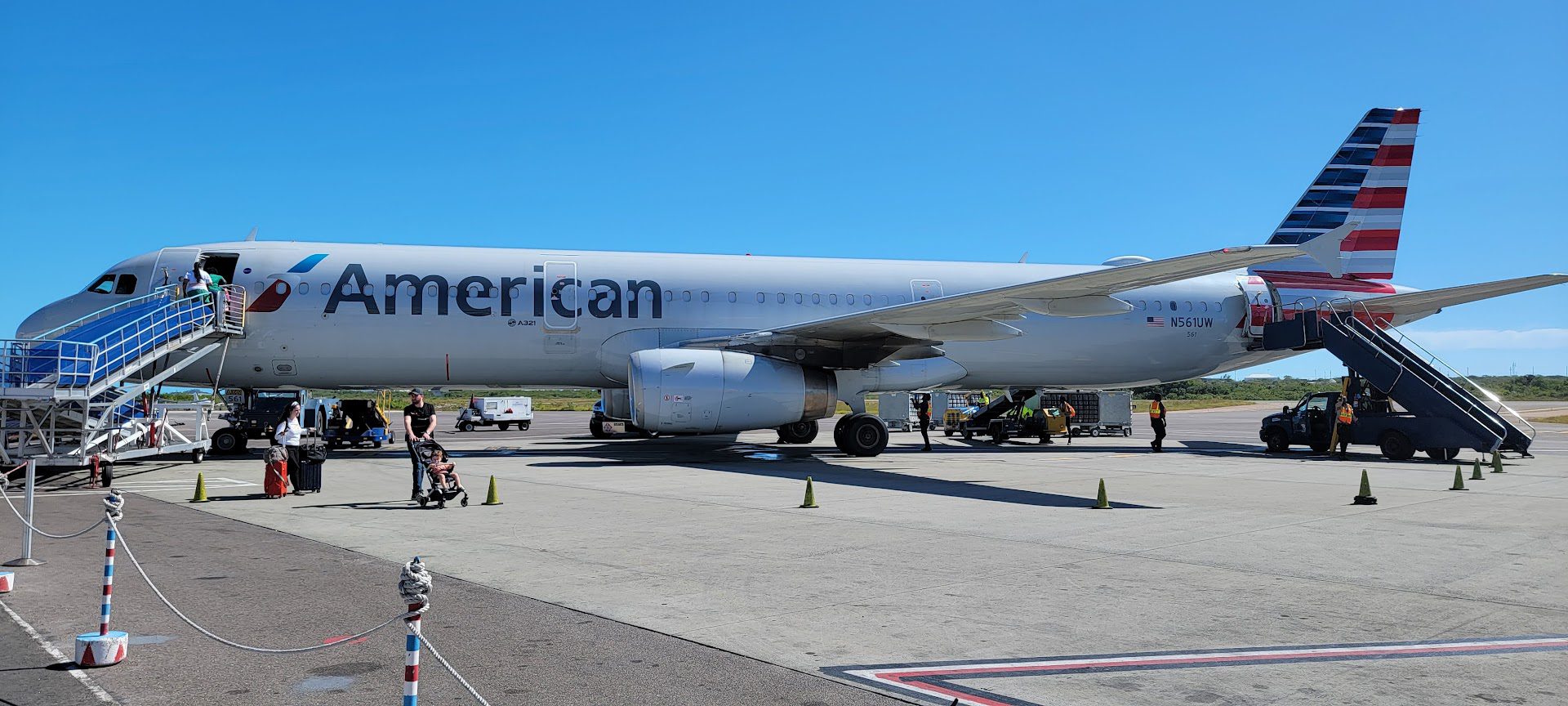
Instead, they focus on the way that American shrunk in the biggest cities and grew in the Sun Belt (though Sumers defended American’s network strategy because the Sun Belt is growing, DFW is a great hub, and American isn’t doing unprofitable flying from New York and LA). That seemed to miss the credit card angle, and they did get around to talking about the need to be relevant to customers in major markets to capture their spending.
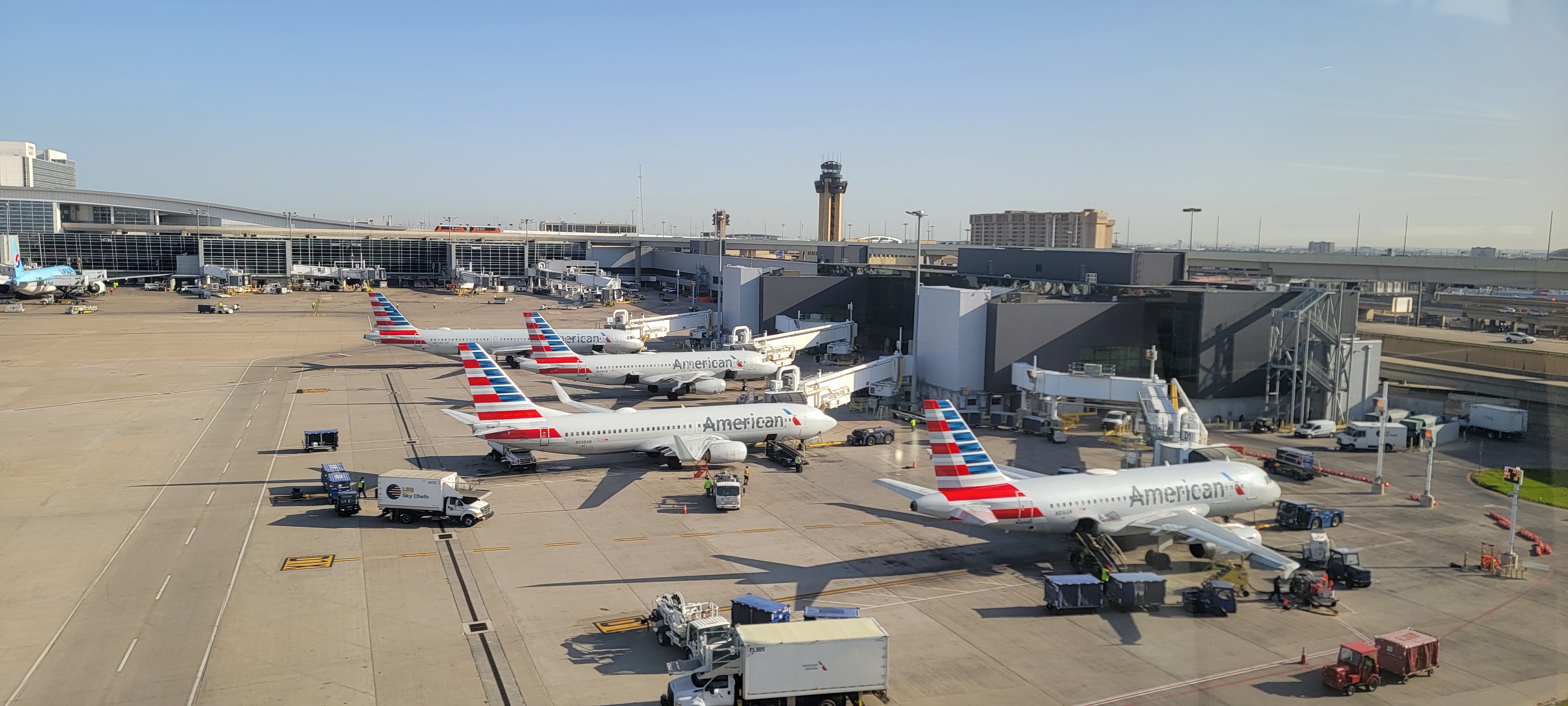
American’s network issues go back to who acquired American – US Airways never had the network to compete with Delta or United. And US Airways traded away is privileged position at New York LaGuardia to Delta before the merger.
There’s an interesting discussion on the podcast of American’s Boeing 737 experience. Brett (Cranky Flier) argues it’s actually not bad, and Brian (Airline Observer) correctly points out that American lacks sufficient extra legroom seats for premium upsells, something that missed the direction consumers were headed. But the story here is actually illuminating.
- American Airlines had actually planned for standard coach seats at 29 inches of pitch (the distance from seat back to seat back). That’s less legroom than Delta, United, Southwest, JetBlue or Alaska – it’s Spirit and Frontier territory.
- There was such an outcry that American backed off the plan. But they weren’t willing to sacrifice one of the two extra rows of seats they were cramming into these planes (legacy American Airlines had 150 seats on the 737s, US Airways management took that first to 160 and then with Project Oasis to 172).
- So they found the extra space to hit 172 seats by reducing the number of extra legroom seats (and squeezing legroom on the few that were left). It wasn’t just about hard seats, no seat back entertainment, tiny lavatories (whose doors initially banged open into each other, and where water sprayed back onto customers from the sink), etc. It was a big strategic error in layout in their quest for more seats at the expense of even letting customers buy better experience from them, either in cash or loyalty over time.
The problems at American, I think, come down to a management team that for the last decade has done too much financial engineering and given too little focus to the product they’re selling customers; has missed the premium trend and chased low cost carriers like Spirit and Frontier despite their own high costs; and failed to articulate a vision for employees to rally around in delivering great experiences to customers.
- The airline loaded up with debt to fund share buybacks. That constrains their fleet re-alignment, and it constrains their investment in product which has been ignored for the decade since US Airways management took over. Buybacks made sense for management when then-CEO Doug Parker was selling over $100 million of his own shares, but they didn’t raise share price. Share prices collapsed, and the airline was left with massive debt and little maneuvering room.
- They ignored New York, Chicago and LA relevance. They weren’t going to win there, but the Northeast Alliance with JetBlue shows they didn’t need to win. They needed to serve customers well enough to drive co-brand card adoption and spending.
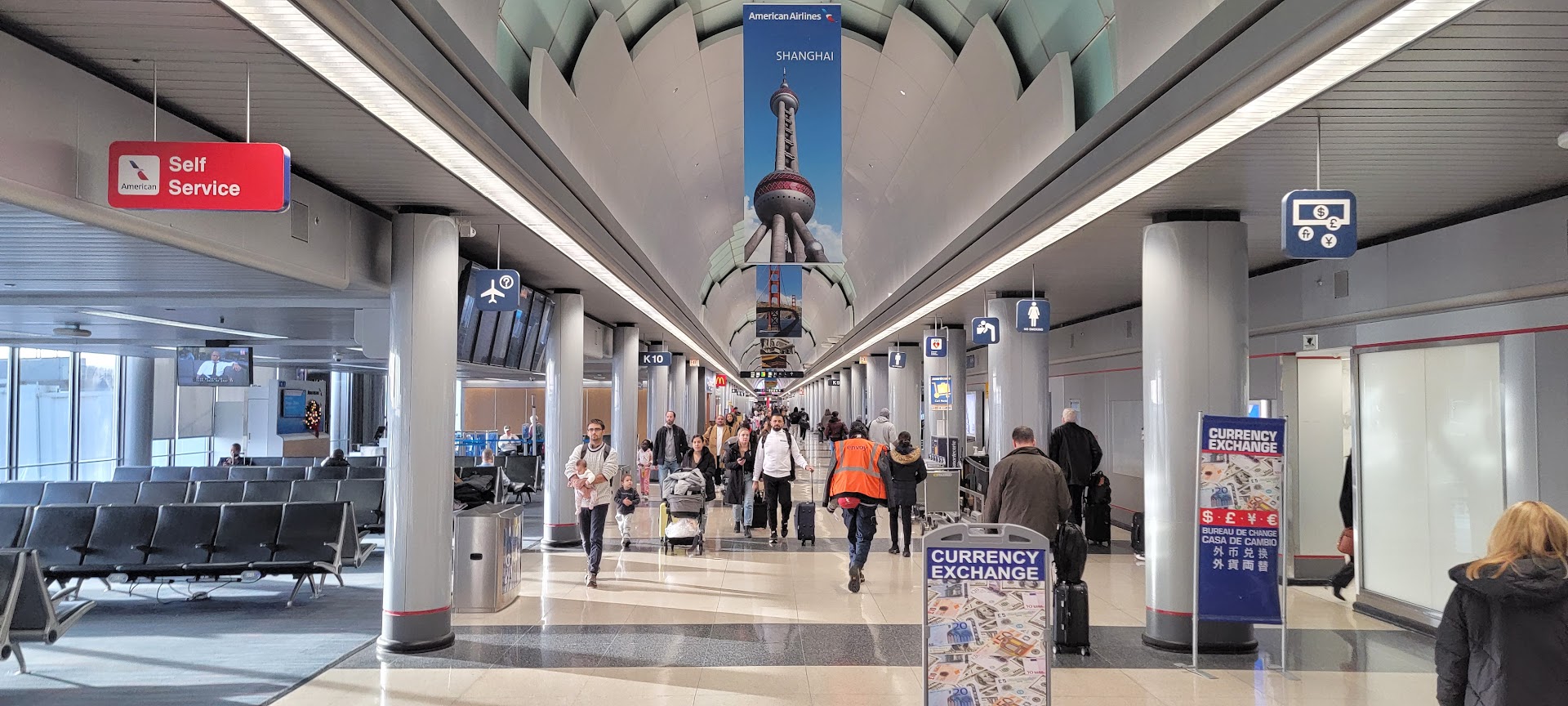
- They retired too many planes and plane types during the pandemic. They retired the Airbus A330s, Boeing 757s, Boeing 767s, and Embraer E190s. They don’t have a significant widebody order book. They have said they don’t think they need the 787-10 and that their existing orders replace Boeing 777s they’ll retire. So they can’t go compete on long haul international, and they can’t experiment with routes using cheap older planes.
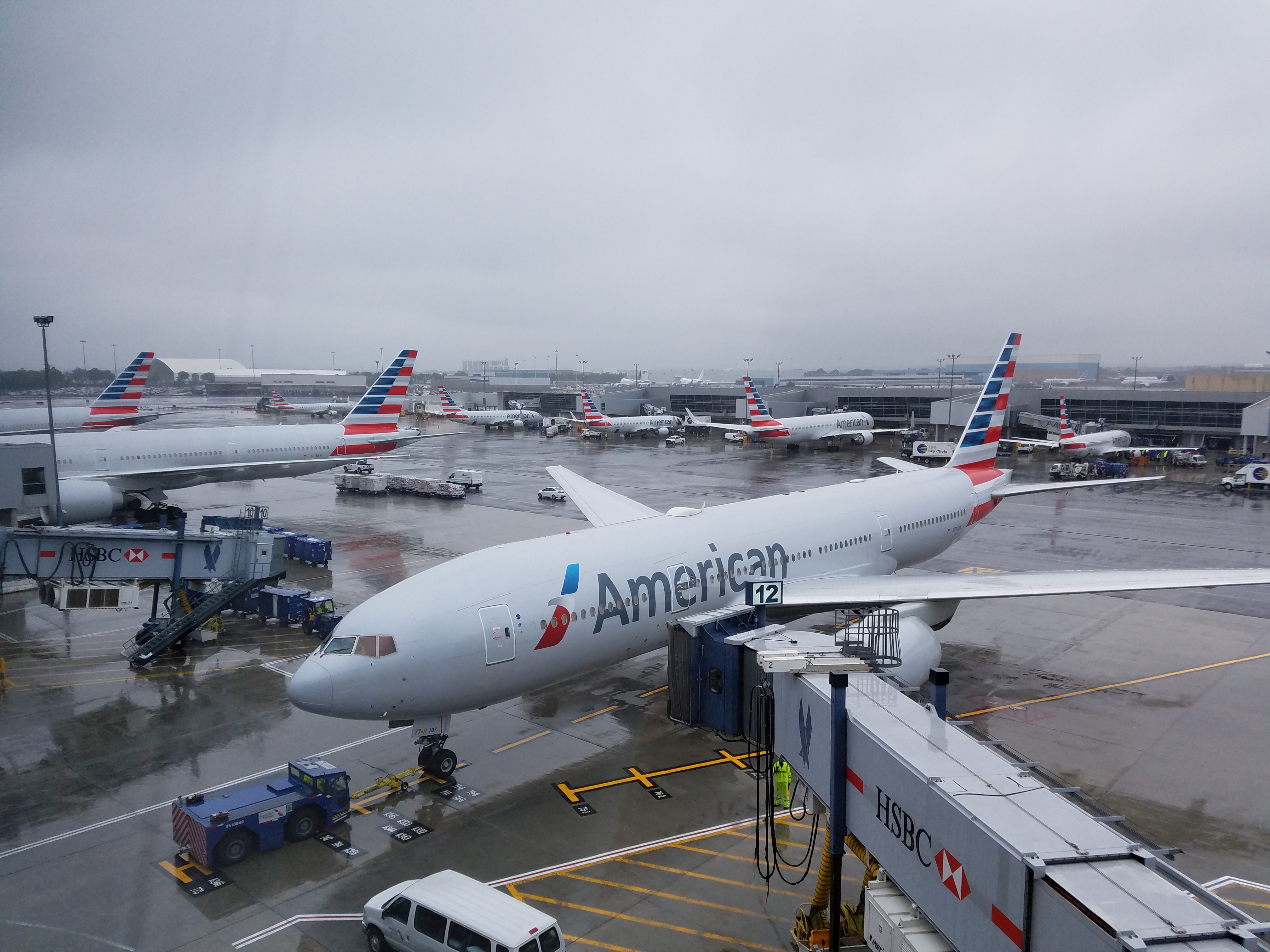
- The airline chased Spirit and Frontier, not premium business. This was the explicit strategy articulated by now-CEO Robert Isom back in 2018. That meant “not spending a dollar they don’t have to” on the product in Isom’s terminology.
[T]oday there is a real drive within the industry and with the traveling public to want to have really at the end of the day low cost seats. And we’ve got to be cognizant of what’s out there in the marketplace and what people want to pay.
The fastest growing airlines in the United States Spirit and Frontier. Most profitable airlines in the United States Spirit. We have to be cognizant of the marketplace and that real estate that’s how we make our money.
We don’t want to make decisions that ultimately put us at a disadvantage, we’d never do that.
- And focusing only on schedule and reliability (without delivering reliabity) to the exclusion of customer experience (Isom has said that reliabiltiy is what matters to customers, but only now realizes it’s table stakes).
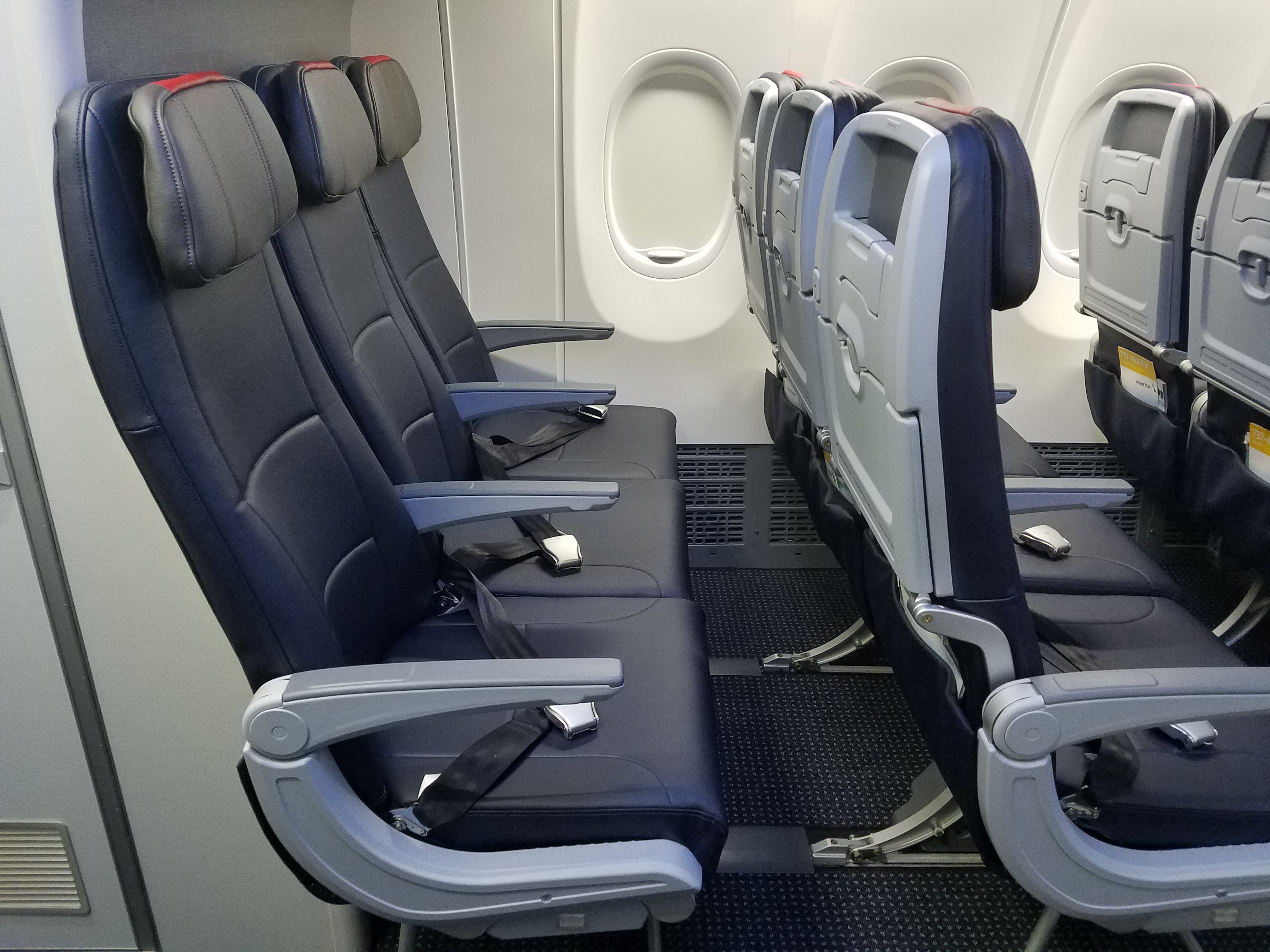
- They have too few premium seats to sell. They removed business class seats from Boeing 777s and 787s. Their standard domestic interior doesn’t have enough extra legroom coach seats to sell. And while they’re planning premium-heavy Boeing 787-9s and adding business class seats to their 777-300ERs as they eliminate first class. But they aren’t reconfiguring their 37 Boeing 787-8s with just 20 business class seats (and effectively just 19 on most long haul routes, because flights over 10 hours often require one to be set aside for flight attendant rest).
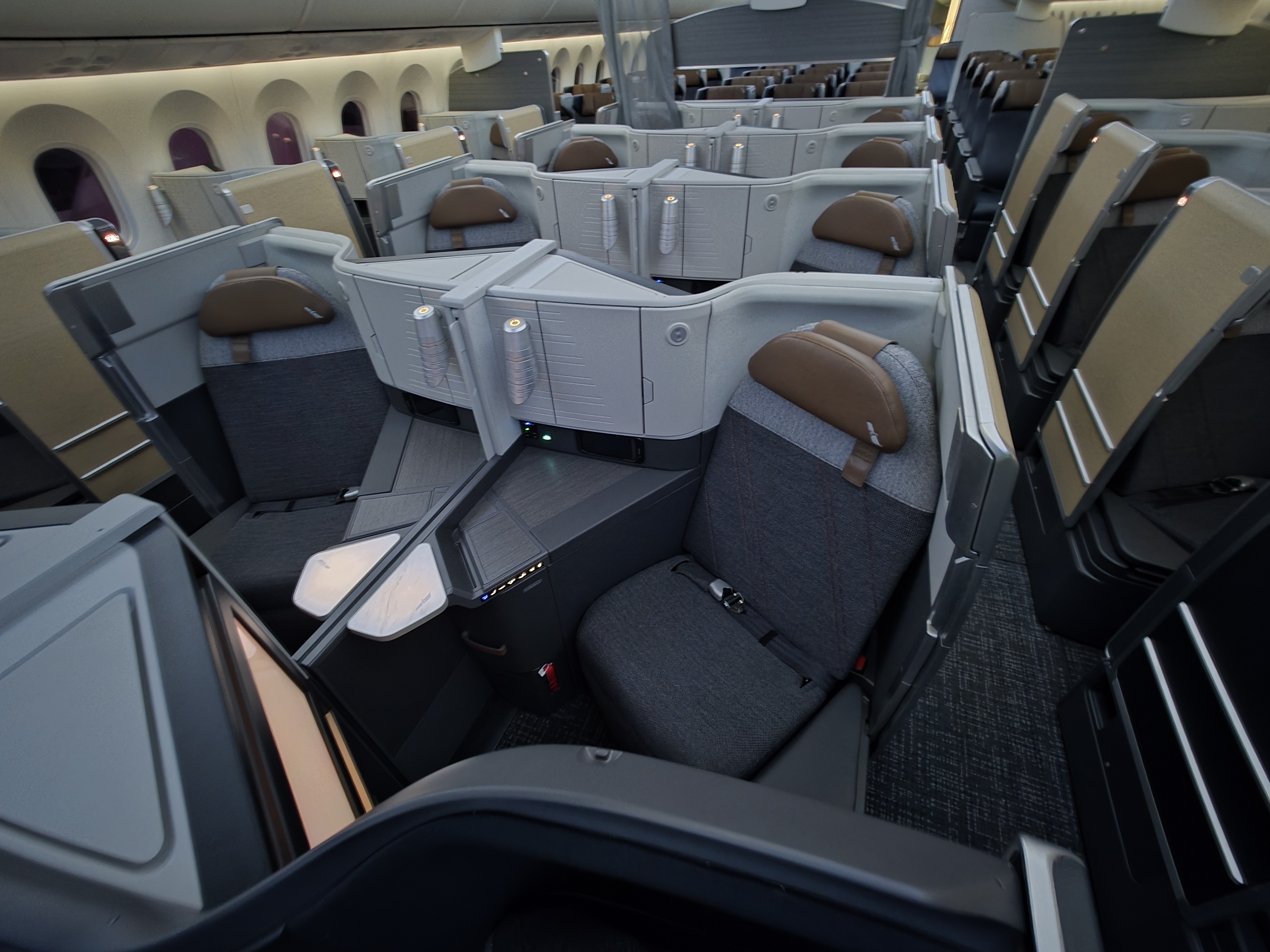
- They have too many unhappy employees, who haven’t had leadership tell them what they’re supposed to be shooting for. I wrote more than 7 years ago that they lacked a mission. In place of a mission, the front line was told the goal is passionately pursuing efficiencies. Employees didn’t know whether they were trying to be a premium carrier or an ultra-low cost one, and that lack of clarity on service standards flows from this.

American needs to turn around poor service by giving tools to employees and holding management accountable. Top leadership needs to be out in airports selling a clear vision for the company and getting everyone on board, the way that Oscar Munoz did at United when he first came on board. Munoz wasn’t the long-term leader United needed, but he was the one who managed to rally employees to believe that the company could do better and that they were part of this.
You used to hear American’s CEO Doug Parker talk about taking care of employees, so employees would take care of customers, so customers would take care of shareholders. But he didn’t actually understand how to do it. Leadership talked up ‘the front line’ but focused on programs to ‘help them use their benefits’ not to share a vision for the company that they were a part of. Parker even told employees they shouldn’t get profit sharing because they didn’t contribute much to profit. You no longer hear about the connection between employees, customers, and profit anymore.
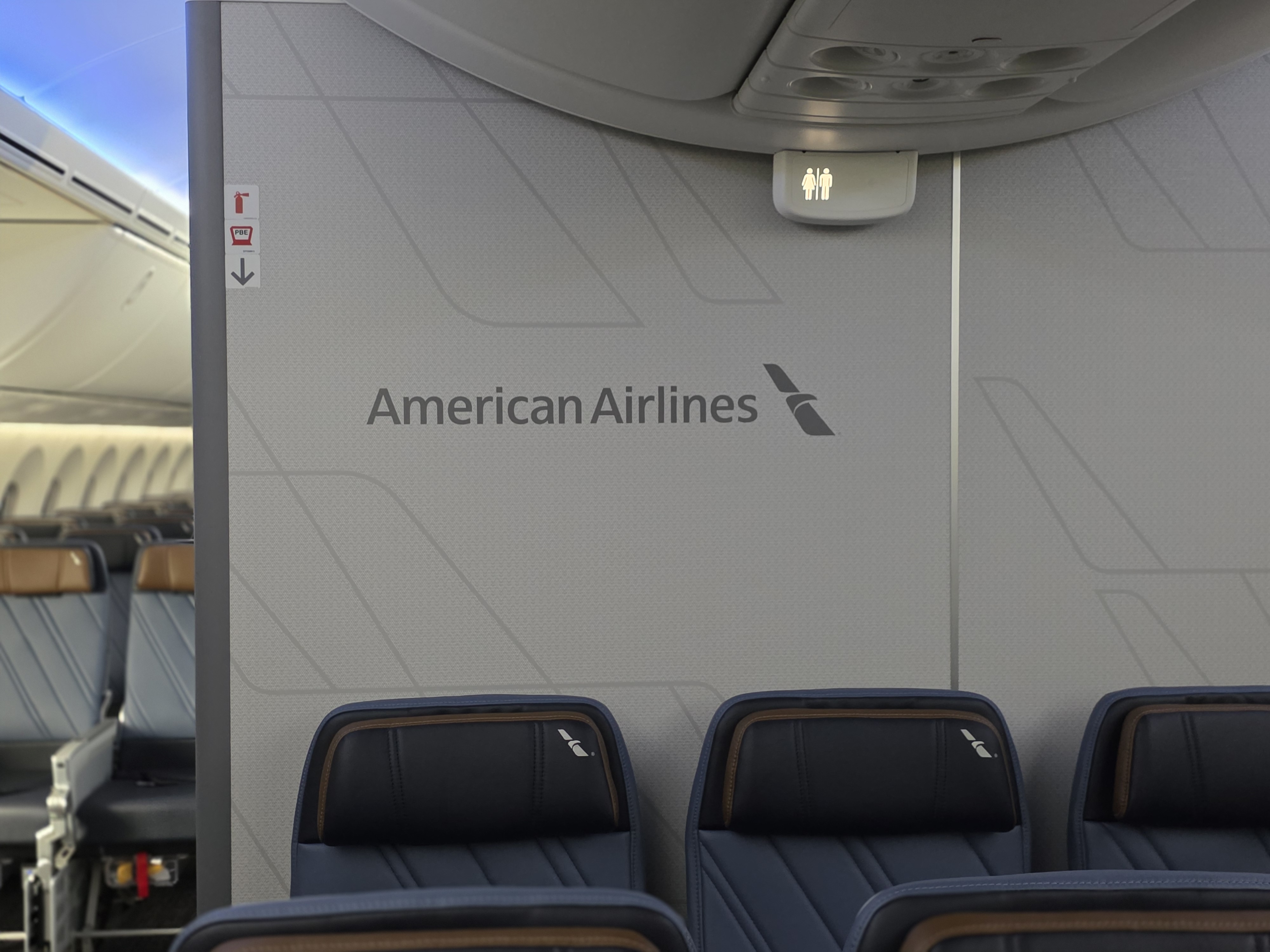
They need widebody aircraft and they need a better domestic product. It’s tough to do this with the debt they’re carrying, especially when aircraft need to be ordered at scale and years in advance. (American says they’re a big enough buyer that manufacturers will make room for them, and that’s somewhat true, but they’re competing with other large buyers like Delta and United for delivery slots.)
And they need better inflight product, up front and for sale in coach. They need better business class lounges and better Admirals Clubs. This all takes money. And they need better reliability, which isn’t just on-time departures it’s also mishandled bags and wheelchairs as well. The airline hasn’t been willing to follow Delta with RFID tags, because that’s tens of cents per bag. But they consistently lose more luggage than anyone else by a large margin.
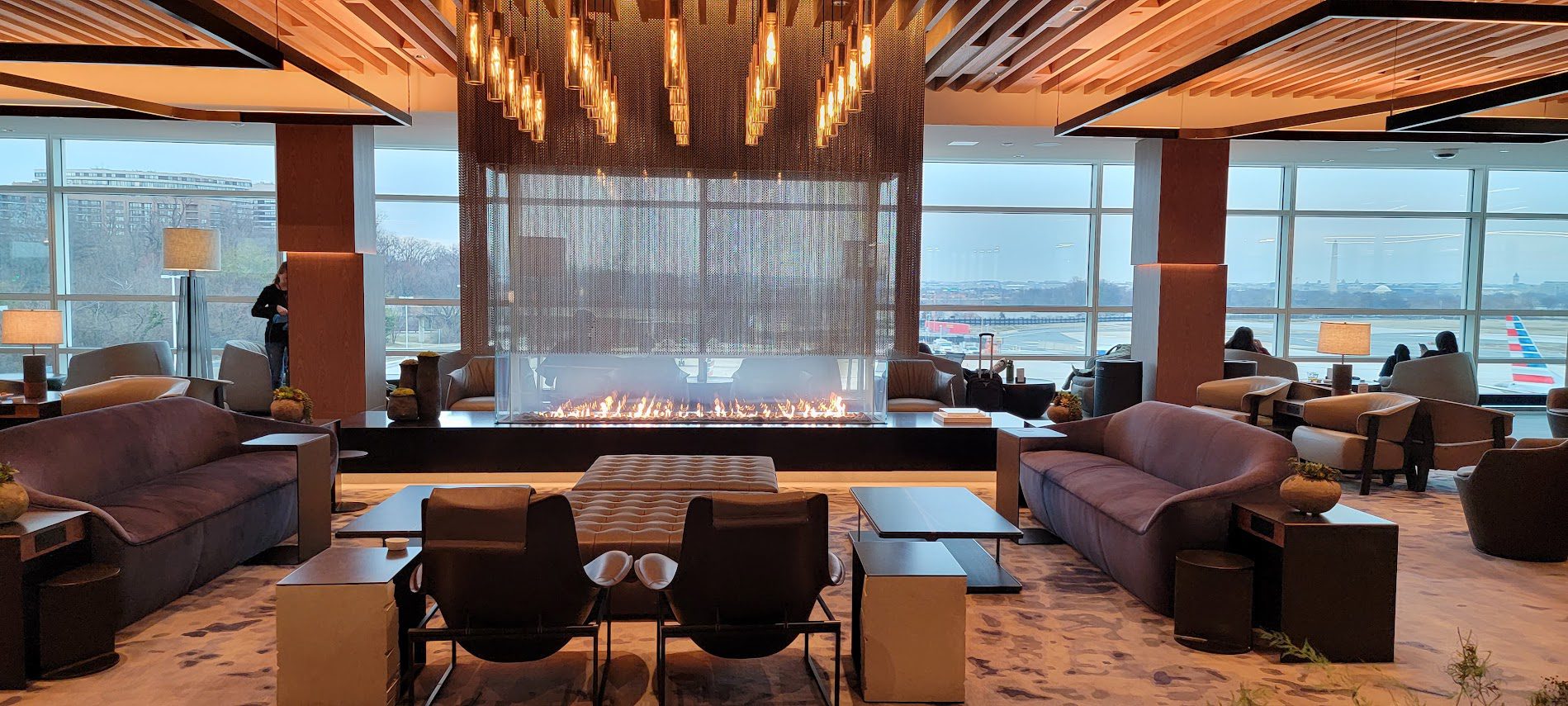
Delta has been on a journey over more than 15 years to get where they are, and their Boeing 767 product is still terrible and they don’t have enough premium seats in their fleet. So it’s unlikely that American Airlines can fix its problems quickly. But they need a roadmap for how they will do it, and how they will sell it.


The entire executive team and the Board of Directors are to blame! They should all be terminated for what they have done to their customers and employees!
They are so far in the hole that righting the ship is going to be virtually impossible
As i see it, the next “black swan”event (medical, geo-political, etc) is going to be the end fo them
As long as they slavishly reward investors over everything else, they will continue to underperform. IMHO, taking on massive debt only to fund stock buybacks is stupid. Draining the funds a company needs for growth and to remain competitive with a good product is how a company ends up like AA.
Incidentally, I can’t think of a worse thing for employee morale than to tell them that they don’t contribute to company profit. I’ve quit flying a few carriers because of their consistently bad service.
Nothing new or illuminating here. American is a bad airline because USAirways was a bad airline and the legacy and heart of US beats within AA. American was once the industry’s bell weather. It is an also-ran for all the reasons stated in this article. While the sun belt may be worth chasing, the premium and yield is not in DFW or CLT or through them, it is in markets like NYC, LAX, and ORD whether the rabid red mob of America likes it or not. This is where the wealth is and that is where the yields are. American waited too long to re-fleet in 2011, and it cost it a pretty penny to do so. It should have filed for bankruptcy and screwed its shareholders and employees in 2002 when every other airline. The airline will not improve. It’s too big to be irrelevant and too ossified in its management to change.
@greggb57 “As long as they slavishly reward investors over everything else, they will continue to underperform. ”
The point here is that they DON’T reward investors, even.
Gary,
glad you covered the AIrShow podcast. They did a good job and you always have good and accurate insights about AA.
However, credit card revenues cannot offset network deficiencies. That is why their NYC strategy hasn’t worked even w/ adding in credit card revenues.
AA doesn’t generate a revenue according to what they file w/ the DOT by flying either the Atlantic or Pacific. It is doubtful that more planes will fix that. AA has never done well to continental Europe and barely has an advantage in Madrid; DL’s addition of BOS-MAD and -BCN plus SEA-BCN along w/ UA’s secondary Spain cities shows that AA is left behind even in its JV partner hubs.
AA has tried to use new airplanes and models to fix their revenue problems; the XLR and 788 are high CASM aircraft that will make AA’s profit problem worse.
You do have to give AA credit for finally increasing pay across its workforce; UA hasn’t done that and it is only a matter of time before the wheels come off UA’s customer service. The only reason UA employees don’t rebel is because UA execs do a wonderful job of brainwashing their employees about how great the company is doing to distract from the fact that the company’s success is coming from the backs of the employees moreso than at any US airline.
And DL is retiring a half a dozen 767s per year and is also expanding the size of the Delta One cabins on its existing A350s, one of the few statements that Brett got wrong.
the real competition for AA is AS’ own international aspirations because it eliminates any possibility of any international growth on the west coast for AA. If WN moves into longhaul international and/or adds any flights from DFW or new N. Texas airports, AA will be in a world of hurt
Spectrum boy hit one right point on AA but then went off rails with non-sequitur UA nonsense that is actually false. Spec hopes the wheels fall off due to some cult-like sycophancy with DL where his dad flew, but the latest CSR surveys show UA beating DL and AA of course. Facts are stubborn things kid.
We used to be a three-legged company: customers/employees/shareholders.
Horton killed that and then ran with a $26b golden parachute.
Maybe now that they are gaining airplanes they will wise up and be a great airline again; we can always hope.
The downfall of American Airlines all started with Parker as Gary stated.in a previously article. It may take time and new leadership but I believe AA come back to the great airline it once was before Parkers arrival.
@ Tim — Bye, Felicia!
Gary,
Let’s call a spade a spade. You and many others have suggestions for success at AA.
But, none of any suggestions will work in the long run because their management is a pile of shit. No way to rationalize their decision making deficits.
Pick a decision, any decision. Getting rid of wide bodies during covid killed international. Squeezing in more seats was an absolute disaster. Same for seat back entertainment. The schedule is the product. Customers and reliability are worthless. Selling off JFK a stroke of shear stupidity. Share buyback added no value to AA. (It was all about CEO.) When DL and UA expanded international, AA doubled down on South. And premium customers are an afterthought.
I am certain much has been left out. BUT, the bottom line is that hey carry little for their customers. I spent 40 years in sales and marketing. And I can honestly say that in each and every day at work, the customer always came first. As a result, my customers were happy, the company and shareholders were happy, and I was happy, slept well at nite, and was well compensated.
Dallas has become one of the global epicenters of business. All one needs to do is to wander past the millions of square feet of Goldman Sachs and JP Morgan Chase offices, or past the Toyota HQ to understand this. DFW is a globally influential airport. If you don’t think so, just try getting an upgrade on a long hauler. Lots of paid premium class travel.. Companies around the nation and world are relocating to Dallas. The preponderance of California license plates in our neighborhood vividly illustrates the migration here! Sadly, one of world’s leading business centers deserves a better hub airline than American
All airlines suck, American sucks more
Jim L
facts you don’t like are facts nonetheless.
AA managed to increase pay across the board and settle open labor contracts; UA has not. That is simply a fact. UA loves to talk about how great the company is doing and Gary is right that there is alot of motivation that comes from communicating a plan. But UA employees are subsidizing the company right now. NO other US airline has as many open labor contracts as UA.
AA’s profits compared to UA just don’t look as bad if UA was paying its employees the same as AA is paying.
Regardless of all the shade thrown at AA, they serve a critical role in providing service to small domestic airports. They wiill be bailed out at the end of the day, just like Delta and United were.
There’s lots of young people looking for jobs now that Trump’s plan to wreck the economy at the order of his Russian masters has resulted in Depression-era levels of unemployment for under-35s. It’s the perfect time for American to start training new customer-facing employees from the ground up, outside of their completely broken current employee culture, then fire EVERY current FA and airport staff member without exception and replace them. There is no fixing the mentality of the average AA employee, and they need to go if there is any hope of turning it around.
Don’t forget that American Airlines went bankrupt after forcing pay cuts and voiding their unmeetable pension plan. It was bought by US Airways, who then changed it’s name to American Airlines for branding purposes. It is no longer legacy American Airlines.
Not all of what they need to improve takes considerable money. Getting gate agents to give proper and timely information. Lounge staff too, in many cases they appear as mum as gate agents. Posting reasonable delays. Better gate management at large hubs.
Yes, management has been Frontier centric for years now.
Honestly the only reason to fly AA these days is reward tickets
By nearly any other metric they suck
gene,
all of the big 4 serve pretty valuable roles in US transportation but we as taxpayers are tired of companies that are mismanaged with the expectation that they will be bailed out.
There are very few markets where AA is the only option.
lots of people love to talk about how much regulation the US airline needs; the reality is that US airlines need to face the full wrath of their better run competitors and pay the price for poor service and strategy.
If a black swan event happens under the current administration, AA might not fare near as well as it has for the last 20 years.
Well said. Pretty much, American needs to recognize what people want then find a way to give it to them and abandon the ULCC blinders that AA management has dragged along since the AmericaWest days. Unfortunately that will almost certainly require leadership rather than just management. Which means a new CEO. Which, since the Board for some mysterious reason keeps emplacing inept chowderheads to lead the company, likely means a new Board Of Directors. At this point we’re getting to a pretty big ask that American is unlikely to respond. I am genuinely astonished that AA’s Board continues to back CEOs who are patently not up to the job of running a huge international full service airline but they do back them and the airline and the public suffer as a result. Perhaps some Board members will read your piece and have an epiphany but I doubt it.
@ Tim — Speaking of companies that are mismanaged and received bailouts, let’s not forget that list includes Delta.
You are free to call anyone you want mismanaged, Gene, but DL is the highest revenue and most profitable US airline and has been for over a decade and runs one of the best operations w/ the best customer service among US airlines-something any objective assessment – which clearly excludes you – can see.
let’s be clear that your dirt throwing at DL doesn’t change the mud that AA has lived in; Gary doesn’t mention it but AA’s downfall goes all the way back to 9/11 when AA did an out of court restructuring which didn’t cut costs enough, then spent almost a decade not filing for chapter 11 which was a key reason for AA’s share losses in NYC.
remember that AA and B6 were both larger than DL at JFK on 9/11
How airlines have done overall can be summed up in how they have done in NYC; over the past 1/4 century, DL has taken a commanding lead in NYC, part of what has driven its industry-leading share of corporate travel and its credit card/loyalty revenue.
Gary is reiterating his “AA is mismanaged” shtick here with little or no new observations (Google the dozens of previous takes). They’ve definitely produced slightly worse financial results post-Covid, but the impact on their customers is virtually non-existent. I fly all 3 of the major airlines frequently, and the differences in their operations and service levels are trivial. As far as future business prospects go, there is no question that AA has the best Sunbelt hubs and that is almost certainly where future economic growth will be concentrated in America. That is almost certainly certain to help them. There is nothing wrong with their current business strategy, as they are sufficiently invested in premium travel, and are certain to be beneficiaries of the imminent collapse of America’s low cost carriers. I like their fleet plan, and their investment in the 321XLRs seems prescient. If I could give them any advice, it would be the unpopular advice to raise their fares a bit to boost margins. I think most of their markets are more defensable then they think, and that their fares are too cheap. On a more popular note, I think they will also benefit from having the most customer friendly frequent flyer program and are the easiest airline to do business with.
I see shades of the long-gone EA here – granted, it was a devastating union strike that killed them off in the end. However they had gone through several years of customers hating them, and employees hating them as well.
Not a recipe for success.
I hope AA is not headed down the same path.
HYPERBOLE is back! Broke!
@Chopstick – Let’s be realistic here. Like Boeing, the last merger was an unmitigated dumpster fire at American. That merger brought in people who were quite skilled at running small ULCC’s but fantastically inept at running a large international airline. It was like having a person with a basic private pilot’s license trying to fly a 747, provided that person absolutely refused to actually learn from their ongoing blunders.
Does American have anything going for it? Certainly, and Gary hasn’t been shy about highlighting those strong points like valuable fortress hubs, strong joint ventures, and the best frequent flier program of The Big 3. He’s repeatedly said that American has the comparatively easy potential to improve drastically as an airline. Pretty much all it would take is a leader with vision, something American has simply been lacking since the AmericaWest managers came in.
“But they aren’t reconfiguring their 37 Boeing 787-8s with just 20 business class seats (and effectively just 19 on most long haul routes, because flights over 10 hours require one to be set aside for flight attendant rest).”
This is factually incorrect. The 787 only blocks a business class seat when flight times require a 4 pilot augmented crew. Most Asia flights from DFW and some from LAX require 4 as does JFK-HND
and DEL. The 787 only has one seat in the crew rest bunk (Boeing design not AA spec) so a business class seat is required to be available for the 4th pilot. It has nothing to do with FA rest. The 777-300’s have two seats in upper crew bunk, eliminating the need to block an F/J seat. The 777-200’s do not have a crew rest seat so one or two must be blocked for both 3 and 4 pilot augmented flights.
The irony is that AA’s slogan for years has been “Caring for people on life’s journey” yet they have failed to live up to that on any level. I would guess that most customer’s don’t feel cared for. And I’m certain that most employee’s do not feel cared for. Parker tried for a while but lost his way. Isom is a miserable failure. People complain about AA employees, and I’ll admit that generally customer service is either lacking or lackluster. But that is a direct result of the way they’ve been mismanaged and mistreated for years. Profitsharing is a joke. My last year there, my last raise didn’t even come close to matching inflation – for a two week paycheck I figured my increase would not even buy a tank of gas. Since it was supposedly tied to my performance and everyone in the department received like raises, there was zero incentive to do more than the bare minimum. And I’m someone who by nature prefers to go above and beyond. But the culture at AA beat that right out of me. AA may invest in nicer seats on newer planes, but until they actually LIVE the slogan and care for their customers and their employees, they will never be a premium airline.
Once again, Gary. AA cabin crew have crew bunks on the wide body airplanes. They do not use passenger seats for crew rest.
The PILOTS get one seat in the cabin.
1A on the 777-200 or use of the bunk.
1D on the 787’s.
Only bunks or chairs upstairs on the 777-300.
Credit cards are just advanced sales (almost quite literally).
If nobody profitable wants the product (6 hours transcon on a 737 without screens screams Spirit, no thanks) it won’t make a difference, as the sales thought the credit card channel won’t materialize.
@Johnmcsymthe – happened to have the 2015 AFPA JCBA on my laptop so here’s a direct quote “For flights over ten (10) hours scheduled flying time on 777/787 aircraft configured with bunks, one (1) regular Business Class passenger seat will be provided on a one‑for‑one basis for each Crew Rest Seat which is unusable”
@DFWSteve,
DFW an epicenter of global business? Hardly. The epicenter of back office, lower paying administrative jobs that have moved out of major corporate hub locations, maybe, or at best. The US economy is headed toward a deep, inflation-laden recession, with high unemployment. The concept that manufacturing jobs can be returned to US shores is beyond laughable. American workers don’t have those skills, are too expensive, and don’t have the educational background to compete in high tech and manufacturing jobs.
Gary, you are reading this wrong which makes me wonder how much else you get wrong. The FA’s only get a seat in business IF a bunk is MEL’d and it’s on a one-for-one basis on flights over 10 hours. This almost never happens.
There’s this weird notion, especially among legacy AA employees, that the company they worked for prior to the merger was great. If you worked for AA when it was a good airline, you would be retired now. Stop kidding yourselves. It was better than today but is that saying all that much?
Second, Gary Leff will never say anything positive about AA. His entire career is built on trashing AA. Unserious person. I guess he feels good to read if he confirms your biases.
There’s no doubt AA is missing the boat on the premium pax, and their international network (or lacktherof) is a giant weak spot. Painting the XLR as a negative is laughable though. And the new 787-9P is a massive step in the right direction.
Anyway, shut up Gary. Last time I give you a click
Ron Mexico. You are a total idiot. Firing every employee is the dumbest thing I’ve ever heard what a moron, obviously you didn’t get your way or something with the airline if you don’t like the airline ljust don’t fly them who would want someone like you in their cabin anyway. I would love to find out what company you work for and have them fire your dumbass
Tim
Unfortunately I fly out of PHL where AA controls something like 75% of the gates. I would love for Delta to have a bigger presence at PHL but it is not the case. Unless I am flying to a Delta or UA hub or want to change planes I have no other option than AA.
Lie-flat Business Class Seats/Int’l Departure
UA: 45.4
AA: 35.1
DL: 31.8
UA: 1,049 aircraft, (227 WB), 187 WB/484 NB on order, 15.6 average fleet age
DA: 990 aircraft, (177 WB), 28 WB/244 NB on order, 14.9 average fleet age
AA: 1,000 aircraft, (137 WB), 26 WB/292 NB on order, 14.1 average fleet age
I do not like American Airlines at all. However, I’ve been forced to fly them since they are always the cheaper option, from LAX or ONT to NYC, when I fly to my company’s headquarters for business.
I don’t know why this is the case, but UA and DL are always $100 or $200 more expensive than AA. AA is either purposely competitive in these markets, or they are not selling as well as UA or Delta.
@michael reread what i wrote, and reread contract language, the seat is often blocked for crew
It’s time for a AA Revolution! Kick out Isom and his whole management team. Replace idiot board members who keep allowing this to happen and degrade American. Create a better onboard product and experience. Give the crew, flight attendants, the tools they need for the passenger. Plus increase crew size so passengers are not waiting to be served. Harassment is rampant at AA on flight attendants on sick call outs to starting meals too early. Literal Salem Witch Hunt! Tons of new hire flight attendants put on reserve from day one, and now offering leaves. When they could increase crew size instantly by 1 or 2. AA is paying them a guarantee monthly minimum. Why not put them on the plane for better service instantly.
@LadyOlives thinks Dallas is “back office”. Try telling that to the companies that recently moved global or continental head offices to the Dallas Ft Worth area, ie YUM Brands, Toyota, Charles Schwab, McKessson, Kubota, Caterpillar, CBRE, and on and on. Lots of corporate travel outta DFW. Dallas is one of the Top 6 cities in USA with a highest % of high net worth people (Houston is 5th). And Dallas, Houston and Austin are the top the three cities in the USA in growth of high net worth households (source : Newsweek; Perplexity Pro search). So the demand for a quality airline experience is high.
@Steve — You do have a choice when flying out of Philly. Frontier flies to many of the most popular destinations. I don’t recommend you do this, but it is a choice — a real difference from AA in cost and service.
You will never see DL or UA expand service at PHL because it is a classic fortress hub. But if DL replaced AA in PHL, it would be hardly noticable for 99% percent of travellers, because flying DL is about 99% similar to flying AA. I’m always skeptical of people who have strong alligiance to flying one of the specific “Big 3” US airlines, as they are shockingly similar. Honestly, the only major difference I see for customers between these 3 airlines now is in frequent flyer programs, as AA’s is materially better than its competitors. I also think DL flight attendants tend to be a little friendlier than on AA or UA, but I don’t see this as much of a material advantage.
@Christian — I don’t think it’s correct to call AA a “dumpster fire” after their merger with US Airways. Everyone (including Gary) seems to forget that the only reason the major airlines consolidated (as was deperately needed for their financial viability) was because of the intelligence and boldness of the US Airways management team (Parker, Kirby and Kerr). These were the smartest people in the room, and they did more good for US aviation than anyone else on the planet. Of course, they weren’t perfect, and made some miscalculations. They never saw the Covid crisis coming (who did?), and they didn’t predict that elite Americans would become more interested in over-paying for modest comfort instead of seeking the lowest possible fares (which is what is currently destroying the ULCCs). Since then, current AA management has obviously pivoted to address these relative weaknesses.
@Chopsticks I’m based out of DFW and flew UA enough to be 1K for several years. Twice I was 1K and ExPlat the same year. My experience as UA 1K has been much better than AA ExPlat.
@Gary Leff says, “@michael reread what i wrote, and reread contract language, the seat is often blocked for crew”
If you used the word “rarely” instead of “often” you would have been correct.
It is you who need to reread the contractual language and then learn how “rare” it is that a crew rest seat is unusable (ie broken and MEL’d).
You might be letting your anti-union bias affect your reading comprehension.
JL,
and yet UA’s strategy doesn’t yield the most revenue – even just passenger revenue on a per seat mile basis – and it doesn’t yield the most profit.
Tell us, JL, what does UA exist to do?
@Chopsticks – The merger went through because Parker suckered the AA pilots into siding with him while American was in bankruptcy. They did side with him and from what I’ve read (old news at this point) they sorely regretted doing that later.
As a small aside, I’m EXP with American and they’re my choice of airline so while I absolutely recognize their massive managerial shortcomings I do not in any way wish them ill. You and I just radically differ on the job that AA’s management is and has been doing since the merger.
For God’s sake does Tom Dunn ever shut up? A freaking know it all troll.
David,
I am here because of the trolls that spout meaningless data that they can’t connect to the real world or make downright factually incorrect statements.
Otherwise, I’d be happy to do something else.
Oh, honey, I just had to chime in after reading Tim Dunn’s latest comment. He’s over here acting like he’s the second coming of Christ, ready to part the Red Sea of American Airlines’ problems with a swipe of his keyboard. I mean, if he’s not careful, he might start walking on water next.
Tim, darling, I appreciate your enthusiasm, but let’s not get carried away. You’re not the Messiah of the airline industry—just a man with a lot of opinions and a keyboard. Maybe save the miracles for Sunday school and let the professionals handle the airline strategies.
But bless your heart for trying. Keep preaching, Tim. Maybe one day, the passengers will rise up and call you their savior.
@michael reread what i wrote, and reread contract language, the seat is often blocked for crew
In my 5+ years of actually flying the plane, I’ve NEVER seen it blocked except for pilots. Never had a single crew bunk bed mel’d.
But please keep believing your false narrative. Might be easier to just admit you were mistaken.
American has one thing going for it. Scale. American has one thing not going for it, scale.
The America West leadership of Parker and Co didn’t create a vision and project it. That shows. It is an airline languishing. No body is happy right now. Nobody.
Coming up with a plan and a vision is needed now. Where will AA be in 1, 2, 5, 10 or 20 years? If current leadership can’t turn this thing around, towards bankruptcy this airline is destined.
The big question is this. Why has the board allowed current leadership to continue given that they represent the shareholders who are not happy? I want this airline to succeed and improve. I fear that will take a very long time.
Miz Grits,
the only thing more of a failure than AA is you and your handler’s endless string of usernames because you can’t stand that someone else really does know more about the airline industry and can intelligently speak about it.
This is SOCIAL MEDIA, darling. Where you ever got the idea that this is a business consultancy, I have no earthly idea.
the vast majority of people on here DO recognize that AA has been a train wreck for a quarter of a century and they just might not make it through the next downturn.
But a whole lot of people have convinced themselves that their favorite airline will reign supreme when any honest assessment says there is a whole lot of risky stuff going in the airline industry; those that thought they were on the top of the world were scratching to stay out of Hades just a few years later – and vice versa.
I think there might be a Sunday School lesson for you in that reality.
Well, sugar, bless your heart for typing all that out—it’s like watching a pigeon try to write a novel: a lot of effort, precious little sense.
You’re right about one thing, darlin’: this is social media, not a business consultancy—but I do love watching someone flail around like they’re teaching Sunday School while barely making it through kindergarten.
And sure, AA’s had its share of bumps and bruises over the years—nobody’s denying it—but sweet Tim, the mental gymnastics you do defending Delta? That’s a full-blown obsession. You’re so wrapped up in pretending Delta is perfect, I’m surprised you don’t sleep with a Delta safety card under your pillow.
Bless your heart, Tim, watching you type is like seeing someone try to steer a 747 with a tricycle. And if being wrong was a frequent flyer program, you’d have Platinum status by now.
Darlin’, the only airline you should be worried about is the one you see in the mirror every morning—because that Delta infatuation? That’s a one-way ticket to Crazyville.
AA’s far from flawless, sugar, but Tim Dunn giving airline advice? That’s a hazard even Delta would (and did) avoid.
no, it isn’t an obsession. about anything.
It is all about your thin skin and your inability to accept the legitimate criticism of your first love, not mine.
you do realize that Gary wrote this article, don’t you? and a whole lot of people agreed.
why do you stick around if it hurts so bad?
Well, bless your heart, sugar — Anita Grits has never had a first love, not American Airlines, and darlin’, you sure as sugar aren’t it. Sweet pea, your little theory is about as believable as a hen layin’ square eggs, and honey, it’s downright entertaining watchin’ you squirm tryin’ to sell it.
Meanwhile, you’re sittin’ there obsessin’ over Delta like it’s the second coming, fussin’ over every creaky old plane and thinkin’ the world cares — bless your heart, darlin’, it don’t.
Sweet pea, the harder you puff up Delta, the smaller your credibility gets — bless your heart.
Darlin’, if you reckon I’m in love with American or frettin’ over their wallet, you’ve flat-out mistaken me for somebody else. Anita Grits don’t do airline crushes, hun — but Lord knows you do.
cut the teflon coated hypocrisy.
It’s the same old psychosis under any other user name.
You can’t stand criticism and you want to take out on me when Gary wrote the article and a host of people have weighed in on how badly run AA is.
Besides Gary who wrote the article, do you realize who has said “Delta” more than anyone else?
YOU
YOU create the drama and then try to pin it on someone else.
YOU are the problem regardless of what concocted user name you come up with.
And AA is the mismAAnAAged airline that is under discussion here.
If you don’t like it, I’m sure you can find an Oprah rerun somewhere.
There’s nothing quite like a fun Sunday and coming back to see Tim Dunn angrily fighting across the internet with a Ms Anita Grits.
Tim, your need to fight with anyone with literally nothing else to do… does not disappoint
But I’ll give her this “And if being wrong was a frequent flyer program, you’d have Platinum status by now.”
Tim, You’re such a loser lol
funny that the same things she says are what you have been saying yourself.
How sad is that?
AA is the topic and neither you or she can defend what has happened or what other people including Gary have to say about AA.
And, of course we know that your long-standing MO is to trash users when you don’t like their message. Funny that Ms. Grits does the exact same thing.
Losers indeed.
Get some sleep, Timmy.
You need it after a long day on your computer.
You don’t cease to amuse. Nor do your random jabs into the dark.
Perhaps spend less time defending delta, and more time being a normal human being. Your paranoia will be less crazy
you were the one that was at it long before I was not just here but over at OMAAT.
and, as usual, you fell flat on your face.
This article isn’t about Delta and it was you, here and there, regardless of your user name, that fixates on DL in order to cover your own inability to accept reality, in this case with AA.
one day you will learn or just give up, realizing that you are nothing more than a fool masquerading as a drag queen.
Such good comebacks, Tim. 😉
Your paranoia is quite funny. You waste your entire day arguing with randos then seek to blame someone else for your own choices. 😉
Have a great week.
looks like you and your sidekick were the ones that were burning the midnight oil doing nothing but trash-talking other people and unable to contribute to the discussion.
what MAX hypocrisy you display there.
you can’t stand that people including Gary have negative things to say about airlines to whom you, not me, attach your soul.
I fly to IAH and DFW a lot, always on UA. About three months ago there was a delay at DFW when I was in the tiny United Club. UA rebooked me to BOS on a AA first ticket. I said gee, I’ll check out AA’s lounge. Imagine my surprise when I found out being a 1st pax didn’t mean you get lounge access.
Ouch! Tim needs some first aid after getting royally burned.